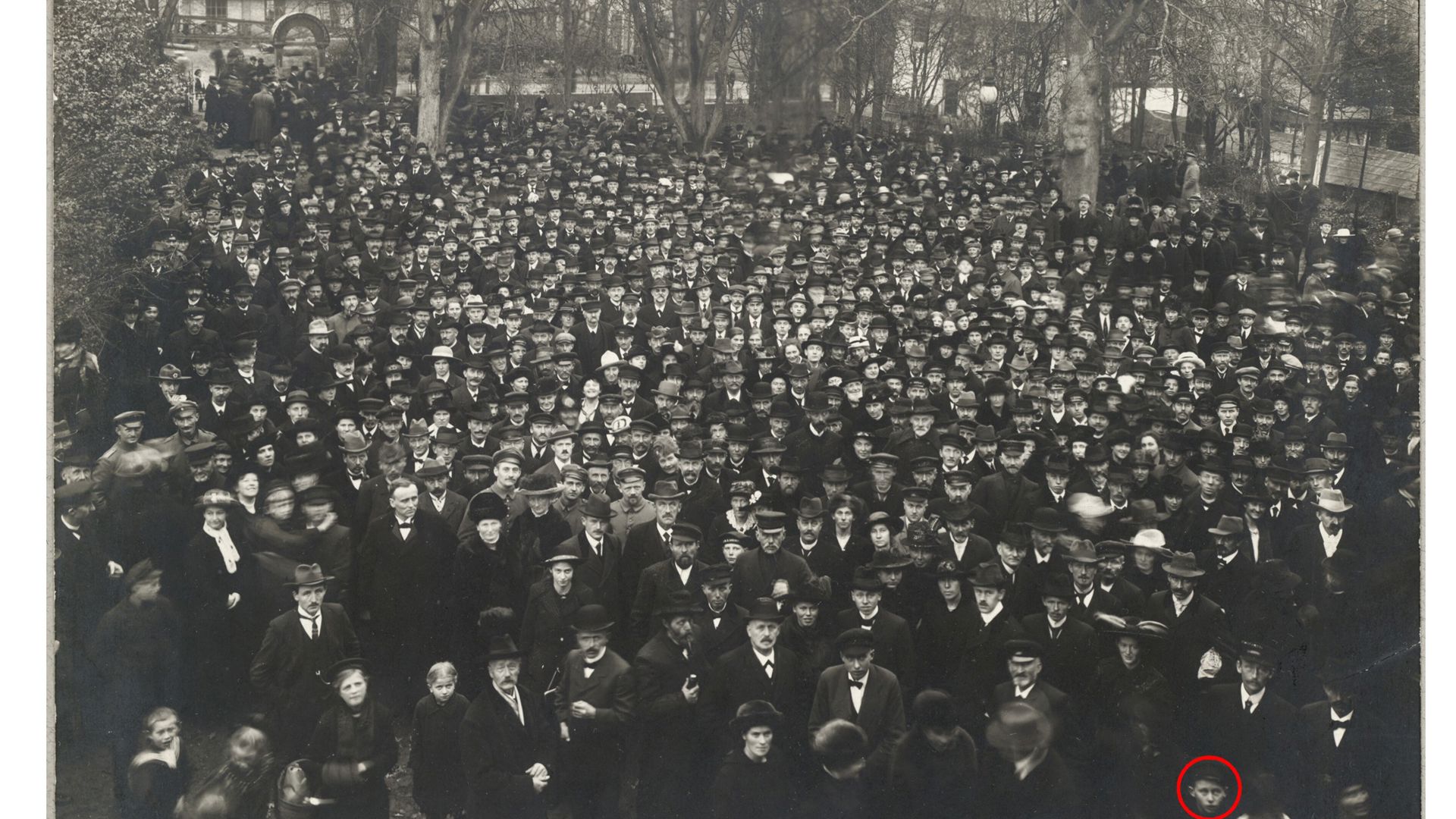Holger Jes Hansen (1904–1984)

In 1918, Holger Jes Hansen was 14 years old and enrolled at an efterskole, a Danish-style boarding school where young people (at that time, many from rural communities) would receive practical training combined with civic-minded instruction and intermediate-level academic teaching. His family lived in the Stubbæk area on a farm called Tinggård, and the school he was attending was Skibelund Efterskole. This school was located north of the border of that day, which ran along the Kongeå river and separated Denmark (to the north) from what was then the German Empire (to the south). Skibelund Efterskole found it extremely important to give their pupils a solid understanding of Danish language and culture, and Holger’s strongly pro-Danish parents wanted to raise their children in the Danish tradition.
Holger was part of the crowd assembled in front of Folkehjem on 17 November 1918, and he is clearly visible at the front. H.P. Hanssen, the speaker that day, was his great-uncle, so Holger no doubt knew how momentous the occasion was.
The distinct Southern Jutland dialect, which is very different from “standard” Danish, was frowned upon by Holger’s parents. The family did not speak in dialect among themselves, and the children were explicitly told to avoid using the customary Southern Jutland greeting mojn (pronounced much like a rhyme on “join”).
You now have two options (note: audio files in Danish only):
- Footprint Story about “the boy who was not allowed to say mojn”: a dramatized interpretation of Holger Jes Hansen’s life around this time, and his version of events during the meeting at Folkehjem.
- Interview with Holger Jes Hansen’s daughter, Birgit Marie Kjær, who relates the events of 17 November 1918 as seen through her father’s eyes that day. The interview was conducted by the Museum of South Jutland, on behalf of Aabenraa Municipality.
